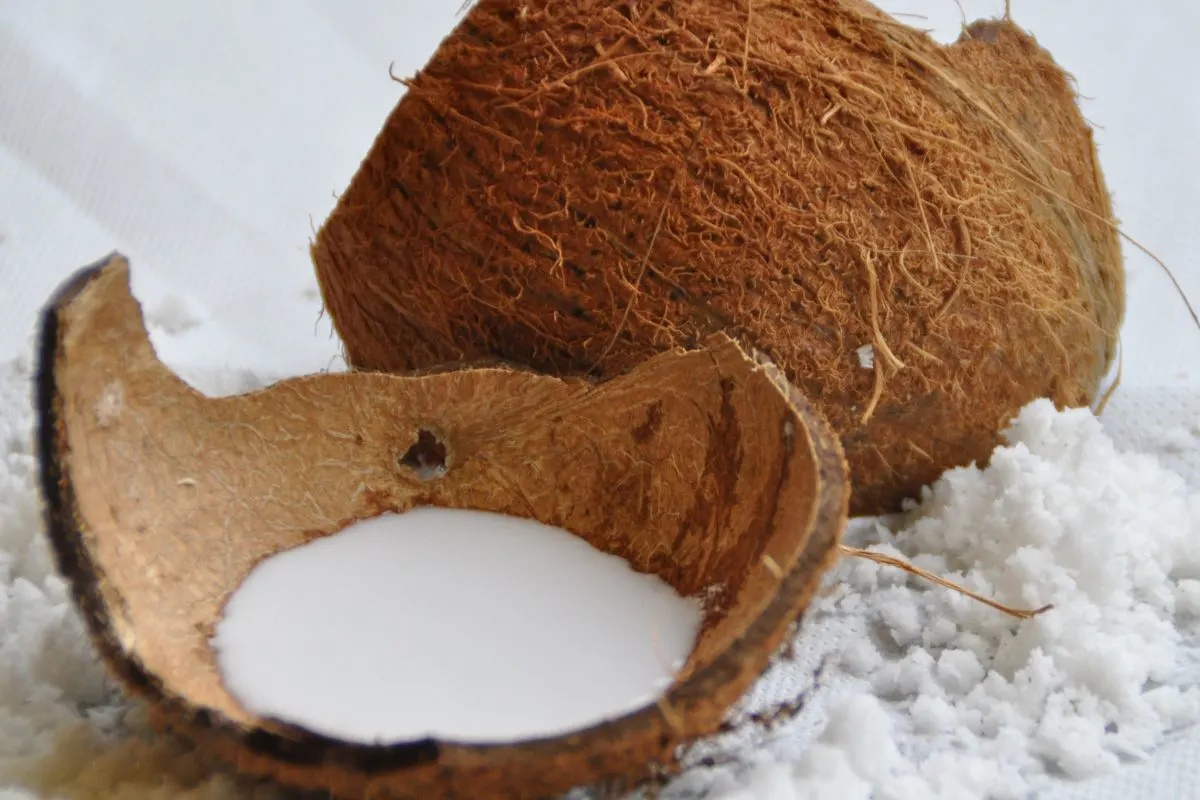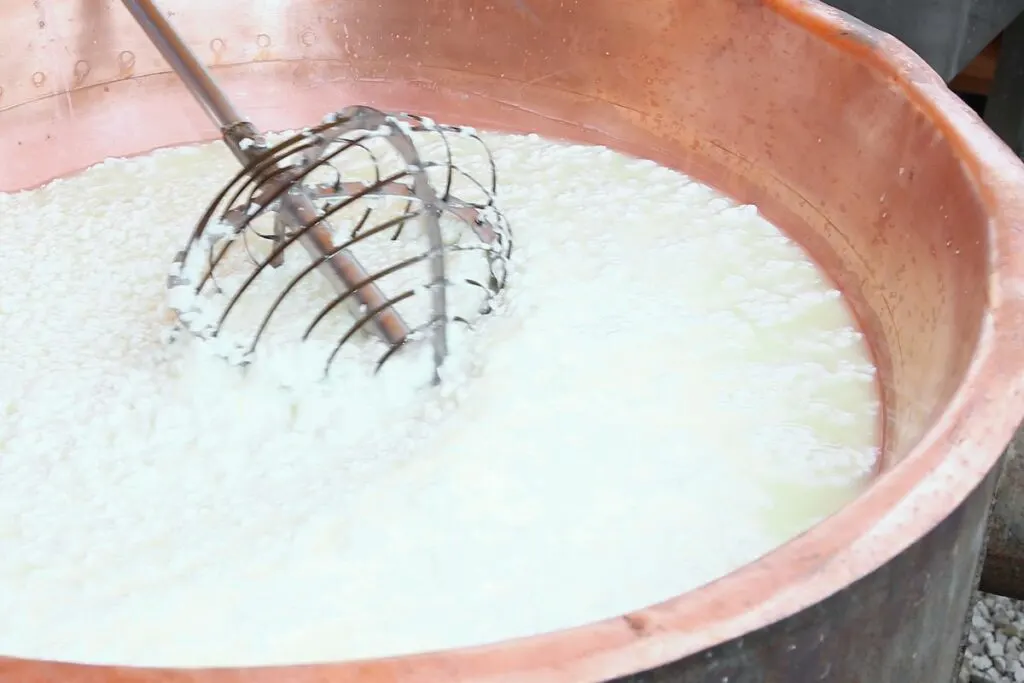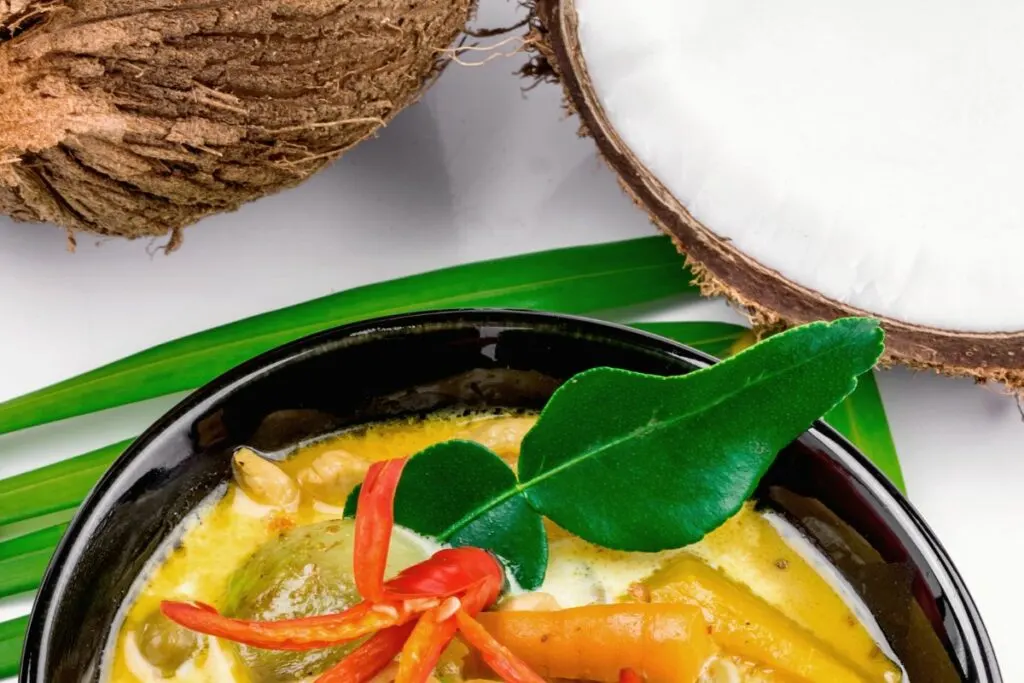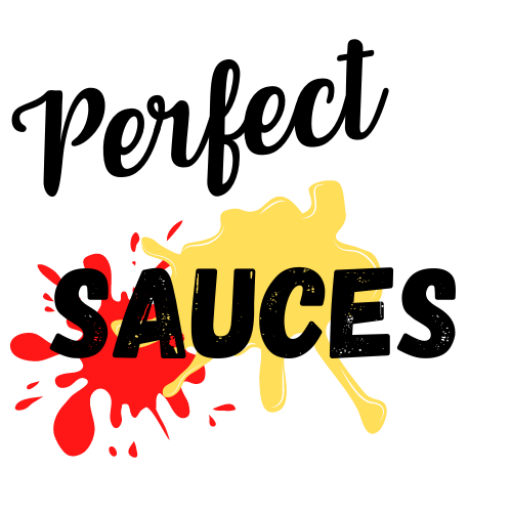The worst problem you can have when making some delicious leftover curry recipes or homemade Asian sauces is your coconut milk separating. It’s actually quite common to encounter curdled coconut milk. Luckily, I’ve got just the best tips and tricks you need to fix this separated disaster.
You can quickly fix separated coconut milk by shaking and blending the coconut milk, adding in emulsifiers, and warming on a stove. But this isn’t all you can do to fix broken coconut milk, so let’s hop right in!

Jump To
🤷 Why Does Coconut Milk Separate?
Coconut milk can separate both when left undisturbed and when cooked at high temperatures. When undisturbed, coconut milk naturally separates as the varying densities cause the thicker coconut cream to rise to the top and the lighter water to settle below. This separation is more noticeable in canned coconut milk. When heated, coconut milk can curdle, especially if not properly emulsified or if subjected to high temperatures.
💡 Ways to Fix Separated Coconut Milk
Fixing Coconut Milk Separated in Can
Shake Vigorously: Give the can a good shake to help reincorporate the separated layers of coconut cream and water. The shaking action helps to break up any clumps and blend the components back together, resulting in a smoother consistency.
Warm Water Bath: If shaking alone doesn’t fully reincorporate the coconut milk, immerse the sealed can in a bowl of warm water for a few minutes. The gentle heat helps to soften the coconut cream and encourages it to blend more easily with the water, restoring a homogeneous texture.
Whisk or Blend: Transfer the contents of the can to a bowl and whisk vigorously or use a blender to emulsify the separated coconut milk. This mechanical action helps to break down any clumps and ensures thorough mixing of the cream and water components, resulting in a creamy and smooth consistency.
Fixing Frozen Separated Coconut Milk
Thawing and Gentle Heating: Allow the frozen coconut milk to thaw in the refrigerator overnight or at room temperature. Once thawed, gently heat the coconut milk in a saucepan over low heat, stirring continuously. The combination of thawing and gentle heating helps to melt the coconut cream and encourages it to blend back together with the water.
Blending with Hot Liquid: If you’re using coconut milk in a recipe that requires further heating, such as a curry or soup, blend the thawed coconut milk with a small amount of hot liquid from the recipe. This pre-blending step helps to emulsify the coconut milk and prevents separation when added to the hot dish.
Adding Emulsifiers: Consider adding a small amount of emulsifiers like guar gum or xanthan gum to the thawed coconut milk. These substances help to stabilize the mixture and prevent separation during thawing and subsequent use. There are a few great ways to thicken sauce without cornstarch of flour that you can use as well.

Fixing Coconut Milk Curdled in Curry
Cooling and Blending: A great way to fix separated coconut milk in curry is to blend it. Remove the curry from the heat and allow it to cool slightly. Strain and transfer the curdled curry to a blender and blend on high speed until smooth. This process helps to break down the curdled coconut milk and emulsify it back into the curry, resulting in a creamy texture.
Adding a Starch Slurry: If blending doesn’t fully resolve the issue, mix a tablespoon of cornstarch or arrowroot powder with equal parts cold water to create a slurry. Slowly pour the slurry into the curdled curry while stirring continuously. Return the curry to a gentle simmer, stirring frequently until the starch thickens and helps to bind the coconut milk back together.
Tempering with Fresh Coconut Milk: Cook fresh coconut milk in a separate saucepan until warm. Gradually add the warm coconut milk to the curdled curry while stirring constantly. The fresh coconut milk helps to stabilize the mixture and blend with the curdled coconut milk, restoring a smooth and creamy consistency.

Fixing Coconut Milk Curdled in Soup
Blend with Coconut Milk: Scoop out a portion of the curdled soup and blend it with fresh coconut milk. Gradually mix this back into the main pot while stirring. The added coconut milk smooths out the texture and blends the separated fats.
Cornstarch Fix: Mix cornstarch with cold water to create a smooth slurry. Pour this into the curdled soup while stirring. Simmer gently to thicken the liquid, binding the coconut milk for a creamy consistency.
Neutralize Acidity: Counteract acidity with a pinch of baking soda if the soup is curdled due to acidic ingredients like tomatoes. Stir gradually until smooth. Taste to maintain flavor balance.
You can also follow the cornstarch method above and adjust the consistency of your coconut milk according to your preference. There are simple methods to solve your coconut milk problems. For separated coconut milk, all you need to do is to vigorously whisk it.
For curdled coconut milk in curry or soup, simply stir continuously. By doing these, you will be able to transform your dish from watery to rich and creamy, just like before!
🧐 FAQs
Coconut milk can curdle when it’s exposed to high heat or acidic ingredients. It may also occur if the coconut milk is past its expiration date or if it is mixed with an incompatible ingredient.
To fix curdled coconut whipped cream, you can try adding a small amount of warm water or coconut milk and whisking it vigorously to smooth out the texture. You can even blend the curdled coconut whipped cream for a few seconds to help restore its smooth consistency.
Curdled coconut milk is generally safe to eat, as the curdling process does not necessarily render it harmful. The texture and appearance may be unappealing, but they are still safe to consume.
